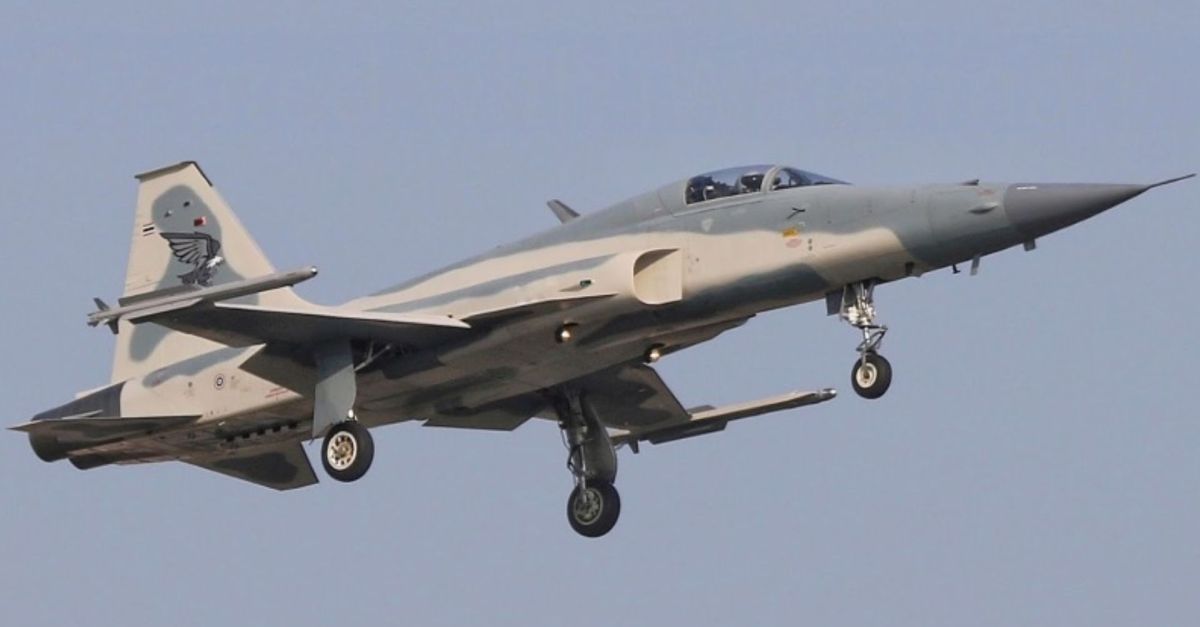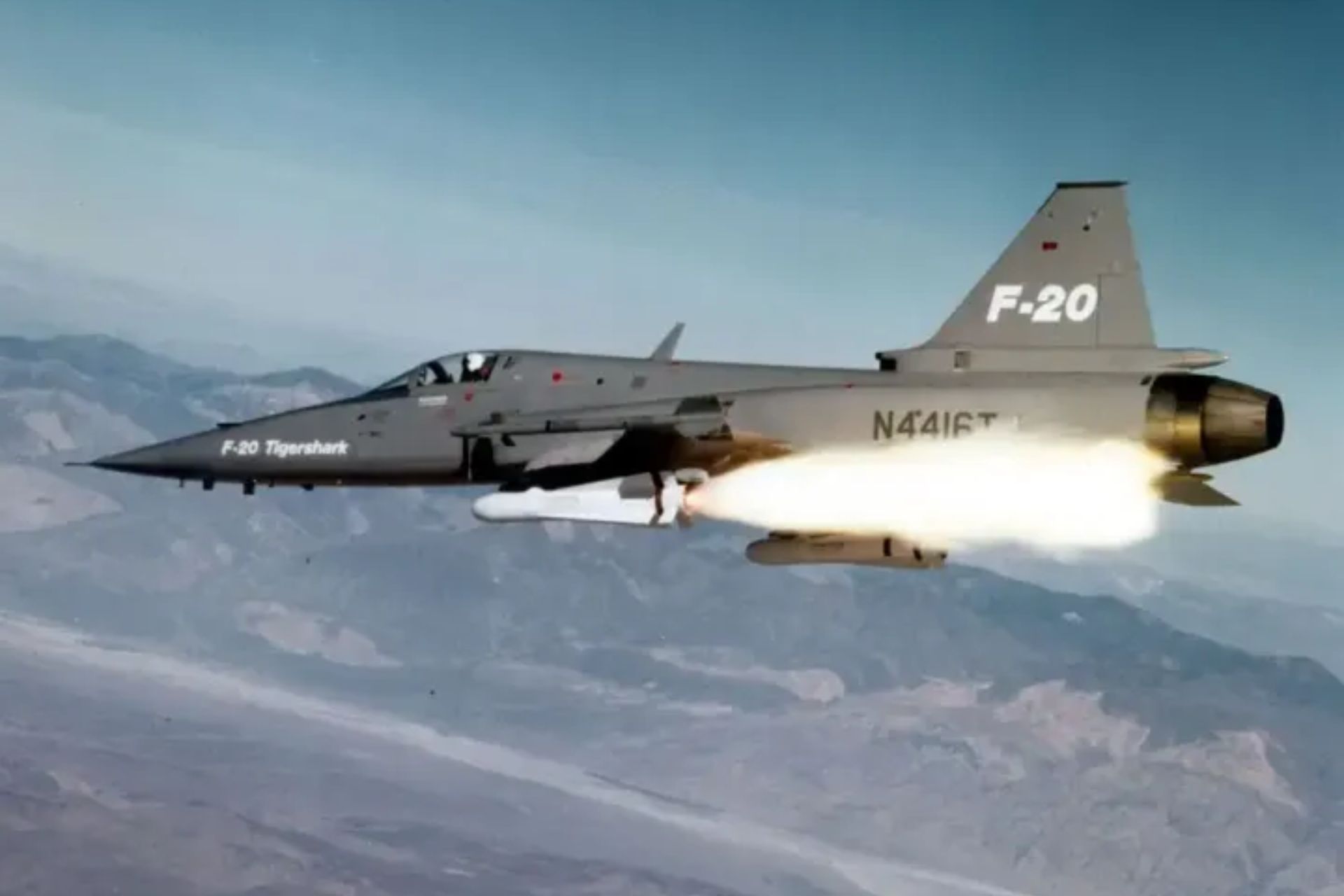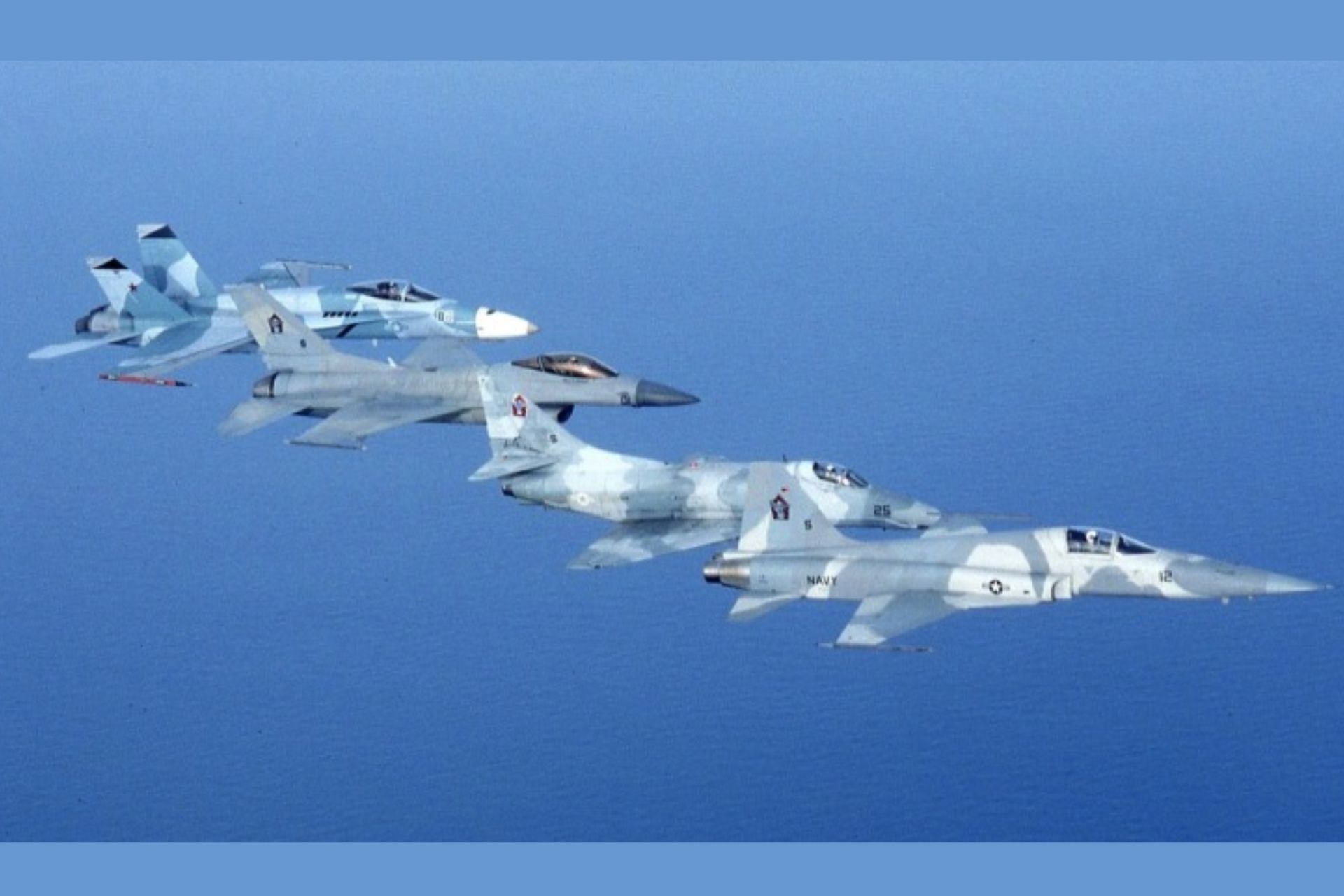Breaking News
FOCUS | F-20 Tigershark: what's happened with missing US light fighter.
The Northrop F-20 Tigershark was one of six American fourth-generation fighters developed during the Cold War. It was the smallest and cheapest in terms of manufacturing and operational costs. While the F-15 and F-14, which were even larger, occupied the high end of the U.S. inventory, with the F-18 and F-18E in the middle and the F-16 at the lower end, the F-20 was even lighter and cheaper than the F-16.
Follow Army Recognition on Google News at this link

F-5TH super light fighter prototype (Picture source: Nothrop Grumman)
Primarily intended for the export market, the F-20 represented a further evolution of a series of fighters derived from the late 1950s T-38 trainer and its derivatives, the F-5, which first flew in 1959, and the F-5E, which began flying 13 years later. The most notable change to the F-20’s airframe compared to the F-5E, a successful third-generation fighter, was the use of a single F404 engine instead of two much smaller J85 engines in a twin-engine configuration, with the new powerplant providing 60% more thrust than the old pair as well as lower maintenance needs. Compared to the F-5, the new fighter’s superior flight performance was complemented by major improvements in beyond visual range (BVR) air-to-air capabilities, avionics, and sensors. Capable of reaching Mach 2, it was significantly faster than both F-18 models and on par with the speed of the F-16.
Although the F-20’s ability to take on high- or mid-range enemy fighters such as the MiG-29 or even the MiG-23 was debatable, the aircraft benefited from very low operational costs and easy maintenance, meaning it could be maintained at much higher availability rates than heavier, more complex fighters, requiring far fewer ground work hours per flight hour. The strengths of the light fighter were comparable to later programs conducted outside the U.S., notably the Swedish Gripen and the Sino-Pakistani JF-17, which came from a similar weight class. Although these very light fighters became popular in the 21st century, as avionics and missiles became increasingly crucial to a fighter's performance, the F-20 itself may have been ahead of its time.
The F-20 Tigershark Light Fighter
In 1975, Northrop began developing the F-20 Tigershark, a fighter designed to be reliable, easy to fly, and inexpensive to maintain. Northrop did not accept any government funding to develop the aircraft, meaning the company did not have to consult the Air Force or any other government agency for design decisions. As a result, the development process progressed quite quickly. Northrop built three aircraft to tour the world for flight demonstrations to potential customers.
According to many pilots, the Tigershark was an excellent aircraft. It could be combat-ready just one minute after takeoff and could climb at 53,800 feet per minute. Northrop planned to sell the aircraft to foreign countries for use in their air forces.
Compared to the F-5E, the F-20 was much faster, benefited from BVR air-to-air capability, and had a full suite of air-to-ground modes capable of firing most American weapons. With these improvements, the F-20 became competitive with contemporary fighters like the General Dynamics F-16/79 (a modified export version of the F-16A/B designed to use the obsolete General Electric J79 turbojet) but was much cheaper to buy and operate.

A F-20 Tigershark fires an AGM-65 Maverick air-to-surface tactical missile. ( Picture source: U.S. Air Force )
Pop culture figure That Never Existed
The American ace Chuck Yeager, the first pilot to break the sound barrier, once said, "Of all the planes I've flown in the world, the F-5 is the most fun to fly."
As author Ehud Yonay explains in his article "Top Guns," published in the May 1983 ,"The F-5 is actually a family of planes, beginning with the F-5A in 1964 and culminating last year with the F-5G Tigershark (now called the F-20). All are sleek, dynamic beauties with such fine body lines that they look like canoes with wings."
The F-5, the only fighter manufactured in California, is an anomaly in the big-budget defense sector. Not only is it small, efficient, and easy to repair, but it is also very cheap. The F-5E Tiger IIs used by Top Gun instructors to simulate Russian MiGs cost about $5 million each, and even the high-end Tigershark costs only $9 million—one-quarter the price of a single F-14 Tomcat.
F-X series
Much of the F-20's development was carried out under a U.S. Department of Defense (DoD) project called "FX." FX aimed to develop fighters capable of combating the latest Soviet aircraft but excluding sensitive frontline technologies used by U.S. Air Force (USAF) planes. FX was the product of the military export policies of the Carter administration, which sought to provide foreign nations with high-quality equipment without risking frontline American technology falling into Soviet hands. Northrop had high hopes for the F-20 in the international market, but policy changes following Ronald Reagan's election meant the F-20 had to compete with the latest variants of the F-16 rather than the downgraded F-16/79.

F-20 tigershark , leading a patrol of F-X series planes , F-20, F-5 , F-16, F-18(Picture Source: US air force)
Bad end for a good plane
The F-20 Tigershark program was canceled in 1986 after three prototypes were built (two of which crashed after their pilots blacked out due to excessive G-forces) and a fourth was partially completed.
The F-20 Tigershark program was ultimately stopped due to a combination of market competition and changing U.S. military export policies. Initially, the F-20 was designed to compete with less advanced export versions of the F-16, such as the F-16/79. However, after the Reagan administration relaxed restrictions on exporting advanced military technology, nations that were potential buyers for the F-20 could now purchase the latest variants of the F-16 without many of the limitations initially imposed. The F-16 offered superior performance and had the advantage of being part of an existing, larger program with established logistics and support systems, making it more attractive to buyers. Additionally, the U.S. Air Force chose not to adopt the F-20 for its own use, which further diminished the plane's appeal in the export market. Despite the F-20's advantages in terms of cost and ease of maintenance, it simply could not compete with the more powerful and versatile F-16, leading to the cancellation of the program in 1986 after only three prototypes were built.


























